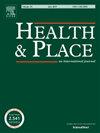主客观建成环境对主动出行行为的非线性影响——以上海市为例
IF 4.1
2区 医学
Q1 PUBLIC, ENVIRONMENTAL & OCCUPATIONAL HEALTH
引用次数: 0
摘要
主动出行指的是不借助外力而依靠人力的交通方式,如步行和骑自行车。这种出行方式不仅提高了城市居民的健康,也有助于缓解城市拥堵。虽然建筑环境与主动出行之间的关系已经得到了广泛的研究,但建筑环境与主动出行的主观和客观方面之间的非线性关系仍然不清楚。在本研究中,我们采用极端梯度增强(XGBoost)和SHapley加性解释(SHAP)模型来研究这些非线性和阈值效应,并确定积极出行选择的决定因素,以上海为例。结果表明,客观建筑环境对主动出行选择的影响显著大于主观感知。在客观因素中,路网密度、人口密度和到市中心的距离是主要影响因素。相比之下,在主观建筑环境方面,只有对交通违规和社会安全的感知做出了显著的贡献。此外,路网密度、人口密度和到市中心的距离对主动出行选择表现出显著的阈值效应。此外,通过分析主观环境感知与主动出行选择不匹配的案例,我们发现通勤距离和家庭年收入是决定主动出行的关键因素,路网密度、人口密度和到市中心的距离也起着关键作用。这些研究结果为制定可持续的、交通导向的上海建筑环境规划提供了有价值的政策启示。本文章由计算机程序翻译,如有差异,请以英文原文为准。
The nonlinear effects of the subjective and objective built environment on active travel behavior: A case study of Shanghai, China
Active travel refers to modes of transportation powered by human effort without external assistance, such as walking and cycling. This form of travel not only enhances the health of urban residents but also helps alleviate urban congestion. While the relationship between the built environment and active travel has been widely studied, the nonlinear relationship between the subjective and objective aspects of the built environment and active travel remains unclear. In this study, we employ eXtreme Gradient Boosting (XGBoost) and SHapley Additive exPlanation (SHAP) models to investigate these nonlinear and threshold effects and identify the determinants of active travel choices, using Shanghai as a case study. The results show that the objective built environment influences active travel choices significantly more than subjective perceptions. Among the objective factors, road network density, population density, and distance to city center are the top contributors. In contrast, in terms of the subjective built environment, only perceptions of traffic violations and social security make notable contributions. Furthermore, road network density, population density, and distance to city center exhibit significant threshold effects on active travel choices. Additionally, by analyzing cases with a mismatch between subjective environmental perceptions and active travel choices, we find that commuting distance and annual household income are key determinants of active travel, with road network density, population density, and distance to city center also playing crucial roles. These findings offer valuable policy implications for developing sustainable, transportation-oriented built environment plans in Shanghai.
求助全文
通过发布文献求助,成功后即可免费获取论文全文。
去求助
来源期刊

Health & Place
PUBLIC, ENVIRONMENTAL & OCCUPATIONAL HEALTH-
CiteScore
7.70
自引率
6.20%
发文量
176
审稿时长
29 days
期刊介绍:
he journal is an interdisciplinary journal dedicated to the study of all aspects of health and health care in which place or location matters.
 求助内容:
求助内容: 应助结果提醒方式:
应助结果提醒方式:


